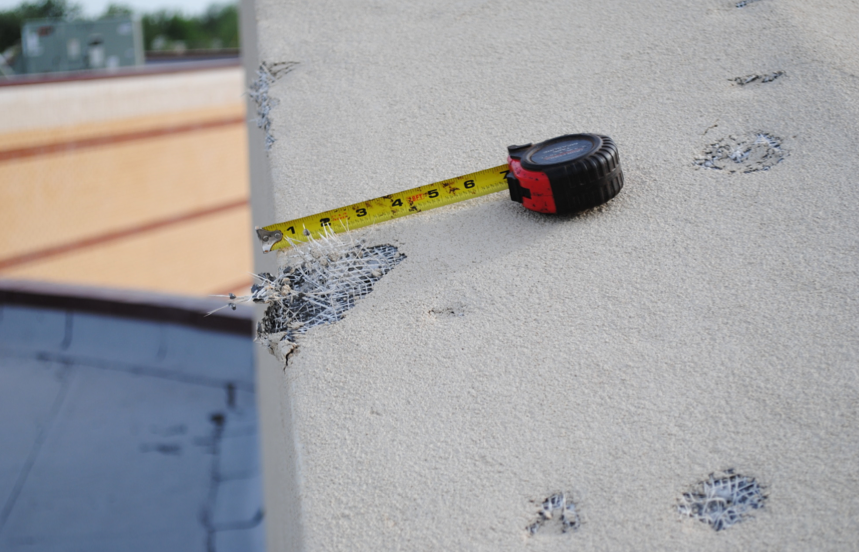I used to love storms. I was never one to cower at the sound of thunder. I often found storms a good excuse to turn off the TV and lights, open the blinds and marvel at the sheer power of nature. If you read my January/February “Raise the Roof”, however, you know I have had a love-hate relationship with rain since moving in with my husband (we married in August 2015). I found myself awake on rainy nights, counting the seconds between pumps of our sump
pump. If less than 20 seconds passed, I knew the basement was flooding and dreaded the morning’s cleanup. (I work from home and my office is in the basement.)
In March, a waterproofing company spent two days installing its patented drain- age system and a new sump pump inside our basement. We monitored the system throughout the month of April, which was rainy, to ensure there were no leaks in the system. It worked like a charm! During April, we also hired contractors to create my new home office, a guestroom and walk-in closet within the basement. So far, we have new windows, lighting and insulation; the contractors are finishing up drywall and ceiling installation as I type.
I know what it’s like when you can’t trust your house to weather a storm. There’s nothing worse than feeling powerless, and seeing your belongings destroyed is gut-wrenching. As the nation braces against another summer of intense weather, it’s comforting to know the construction industry—specifically roofing—is researching and innovating to protect people’s homes and businesses from Mother Nature’s wrath.
For example, in “Business Sense”, Jared O. Blum, president of the Washington, D.C.-based Polyisocyanurate Insulation Manufacturers Association, writes about initiatives to improve the resiliency of our building stock and infrastructure through codes, standards and proactive design.
The Clinton, Ohio-based Roofing Industry Committee on Weather Issues Inc., better known as RICOWI, recently sent 30 researchers to the Dallas/Fort Worth metroplex after an April hailstorm. According to Joan Cook, RICOWI’s executive director, the 10 teams of three inspected 3 million square feet of low and steep-slope roofing during the investigation. The teams’ findings will result in a report to help the industry better understand what causes roofs to perform or fail in severe hail events, leading to overall improvements in roof system durability. Learn how RICOWI mobilizes and studies roofs in “Special Report”.
There are many other stories within this issue about roof systems working along- side other building components to create durable, sustainable and energy-efficient buildings. Humans have a long history of innovating and evolving to meet the needs of their current situation. I have no doubt that in my lifetime our buildings will be built to withstand nearly any catastrophic event. Meanwhile, I’m happy to report we received 4 1/2 inches of rain in three hours last week and our basement remained bone dry. Thanks to innovations in basement waterproofing, I may start to enjoy storms just a bit again!



Be the first to comment on "The Roofing Industry Seeks to Protect Buildings from Storms"